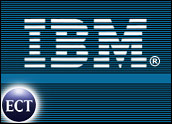
IBM computers and Intel processors run the bulk of the world’s 500 most powerful supercomputers, according to an annual ranking, which also found the performance of the top machines increasing quickly.
IBM extended its lead in the latest top-500 list and can now claim ties to 44.8 percent of the systems and just over half of the total computing power in the rankings. HP ranked second, contributing 28 percent of the systems and 18.5 percent of the performance capabilities. No other computer maker could lay claim to more than 6 percent of the machines or computing power.
The top-500 list, now in its 23rd edition, has become a closely watched measure of top computing power, providing a snapshot of vendors and countries that are leading the way in developing the most powerful machines. The rankings are compiled by researchers at the University of Tennessee, the University of Mannheim in Germany and the Lawrence Berkeley National Laboratory.
“The list gives companies and vendors bragging rights,” Jack Dongarra of the Innovative Computing Laboratory at the University of Tennessee told the E- Commerce Times.
Intel Inside Supercomputing
Of the top-500 supercomputers, 287 systems use Intel processors, up from 189 just six months ago and more than double the number that used Intel chips a year ago. IBM Power Processors run the second-largest number of systems, at 75, followed by HP’s PA-Risc processors, with 57 of the top 500, and AMD, which ran 34 of the machines on the list.
Dongarra said the rise of Intel-based chips is not surprising given that more of the computers on the list are now actually clusters of smaller computers tied together rather than a single machine. There are 291 systems labeled as clusters, up from 208 just six months ago, and making them the most common architecture among the top 500.
“Intel provides a good price point for cluster-based computing,” he said.
Still Number One
Retaining its spot at the top of the list is the Earth Simulator supercomputer built by NEC in Yokohama, Japan, in 2002. The machine scored a benchmark performance of 35.86 teraflops. One teraflop is equivalent to a trillion calculations per second.
The geographic distribution of supercomputers is changing, with China making its first appearance at the top of the list and a system in Europe appearing on the list again after an absence.
Systems based in the United States held several of the top slots, including number two. Thunder, a cluster system running Intel Itanium 2 machines at the Lawrence Livermore National Laboratory (LLNL) in California, ran at 19.9 teraflops. The LLNL also lays claim to spots four and eight on the list, which are held by prototypes for the IBM BlueGene/L system, which researchers say likely will take over the top spot on the list as soon as the end of this year.
A UK-based system ranks number six, helping Europe regain a spot in the top 10, while China made its way into the top 10 for the first time ever with a system assembled by Chinese integrator Dawning. It runs on AMD’s Opteron chips.
While many of the machines on the list are clusters, the number-seven system, a Japanese-built system running Fujitsu hardware, is noteworthy because it is a heterogeneous cluster running nodes of different performance capabilities. Dangarra said the system is the first of its type to reach the top 10.
Raising the Bar
The more recent list also makes it clear that it has became harder to reach the top 10, with machines running at 8 teraflops not making the cut for the first time. That left the Linux Networx Opteron-based cluster at Los Alamos National Laboratory, at a speed of 8.05 teraflops, stuck at number 11.
Missing altogether from the list is the “SuperMac.” The cluster, built at Virginia Tech, made a strong debut on the list six months ago, but is offline for hardware upgrades.
While the list is seen as an informal contest among computer makers, striving to build ever-faster systems has important implications for research, Aberdeen Group analyst Peter Kastner told the E-Commerce Times.
“There are applications in the military, in medical research, in all fields of science,” Kastner said. “This is an example of how the less expensive computing power can really become important.”






















































This is fascinating technology. IBM and Intel have made great inroads here. I suspect that with some additional R&D from the snack food industry these feats could be accomplished running on 100% transfats. I know there is a great deal of concern with respect to transfats, but a growing body of research suggests that transfats may in fact be good for your skin.
Once the technology is based on commodity transfats, Super Computers, like snack foods, will be a much more competitive industry.
-s
http://transfats.blogspot.com